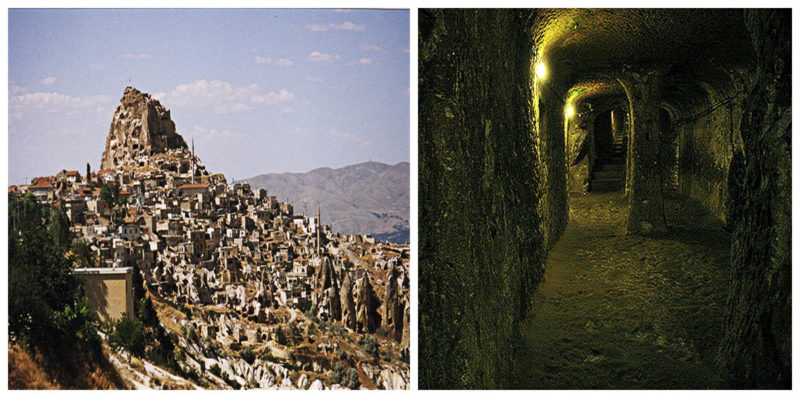Extending to a depth of nearly 85m and large enough to accommodate some 20,000 people together with their livestock and food reserves, this underground city, the likes of which are rarely seen, is truly a masterpiece.
It is located in the Derinkuyu district in the Nevşehir Province of Turkey and today serves as the largest underground city in Turkey among the several across Cappadocia.
If one is to explore Derinkuyu, he or she will notice that this manmade underground city is equipped with all the necessities, such as wine and oil presses, stables, cellars, storage rooms, refectories, and the inevitable chapel.
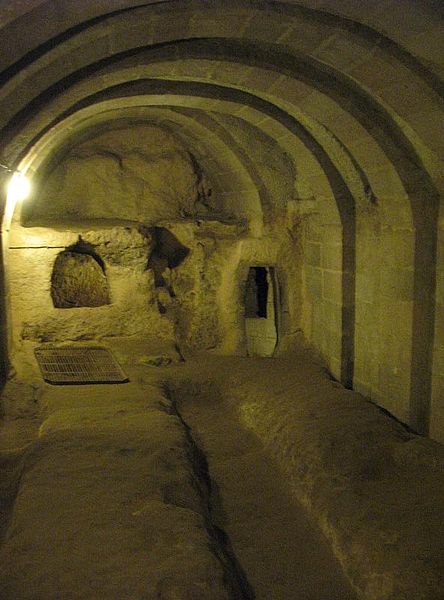
According to the Turkish Department of Culture, the caves may have been made by the Phrygians (Indo-European people) sometime in the 7th or 8th century. This culture was so advanced for its time that the archaeologists believe these underground cities can be listed in the hundreds.
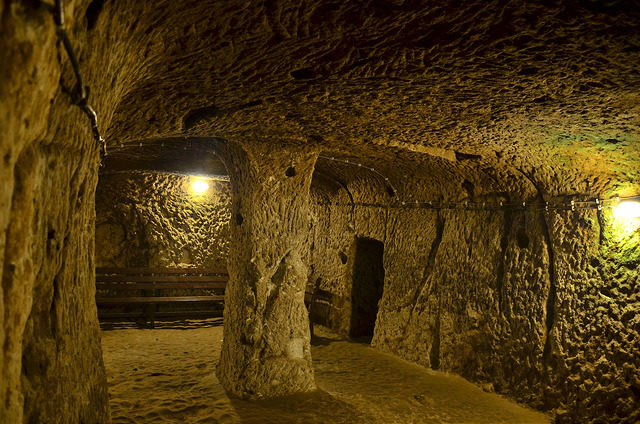
To this very day, only six of these underground cities have been found. Derinkuyu is by far the largest of them all, spreading its beauty and glory across eight levels at a depth of 85m underground.
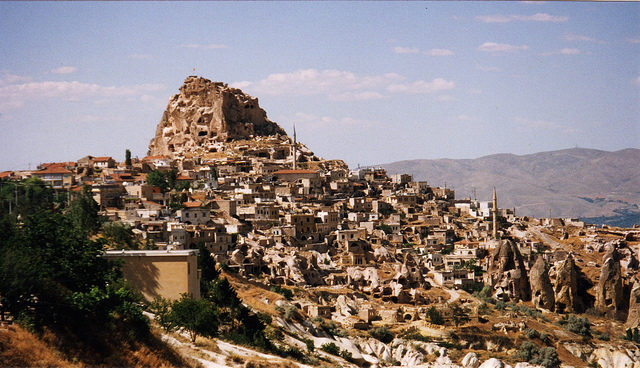
It was when the Phrygian language ceased to exist back in Roman times that it was replaced with its close relative, the Greek language. This is the reason why the interior of this city is covered with Greek inscriptions. Back then, the people of Turkey were mainly Christians.
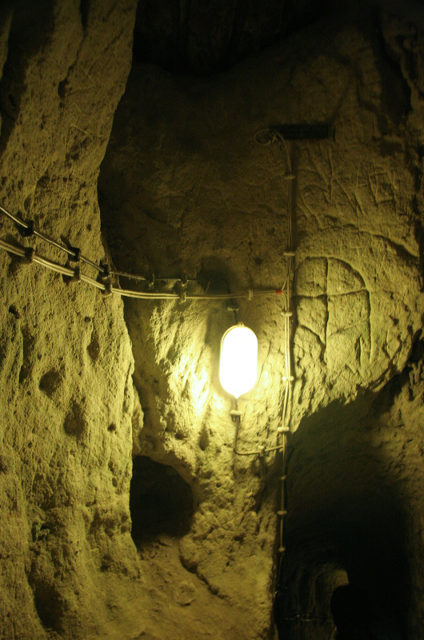
Derinkuyu was used as a shelter, a sort of protection from the Muslim Arabs during the Arab–Byzantine wars, which lasted some 400 years from the 780s up until the 1180s. Once inside the safety of the city, the huge stone doors could now be closed, creating the perfect underground vault.
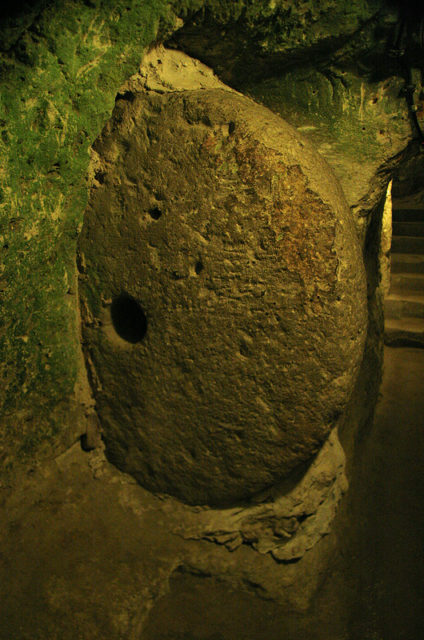
Back then, the name changed to Malakopea. And just as any other above ground city, Cappadocia’s own masterwork had underground streets that connected it with other underground cities.

During times of peace and away from the destruction of war, the underground city was used as a form of cold storage and an additional underground barn.
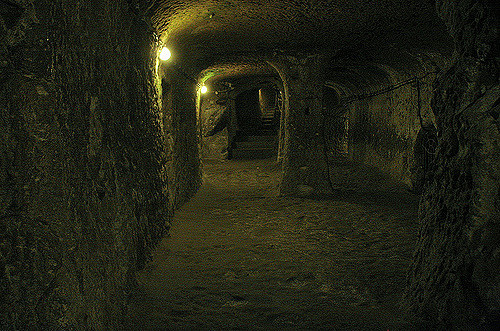
These very settlements were continuously used as a form of protection up until the 14th century, when the Mongolian incursions led by Timur devastated the region. The city was used even during the 20th century when the Cappadocian Greeks used this underground shelter to escape from Ottoman persecution.
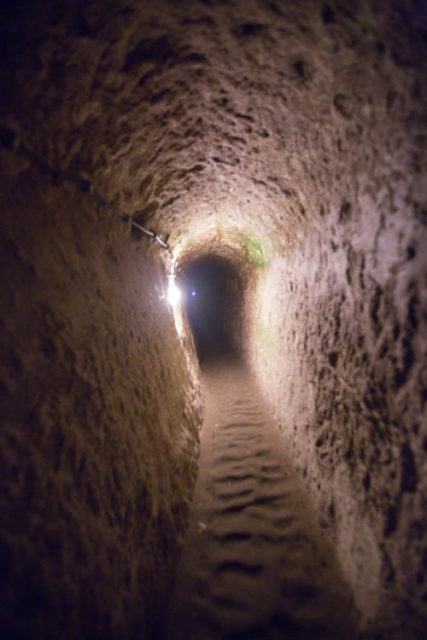
Later, when the last of the Christian inhabitants were expelled in 1923, the tunnels were finally abandoned. They lay forgotten until a mere curiosity led a resident of the area to explore the mysterious room behind the wall of his house. A little bit of digging soon revealed the intricate tunnel network.
https://www.youtube.com/watch?v=aHJAoR0Jw58
